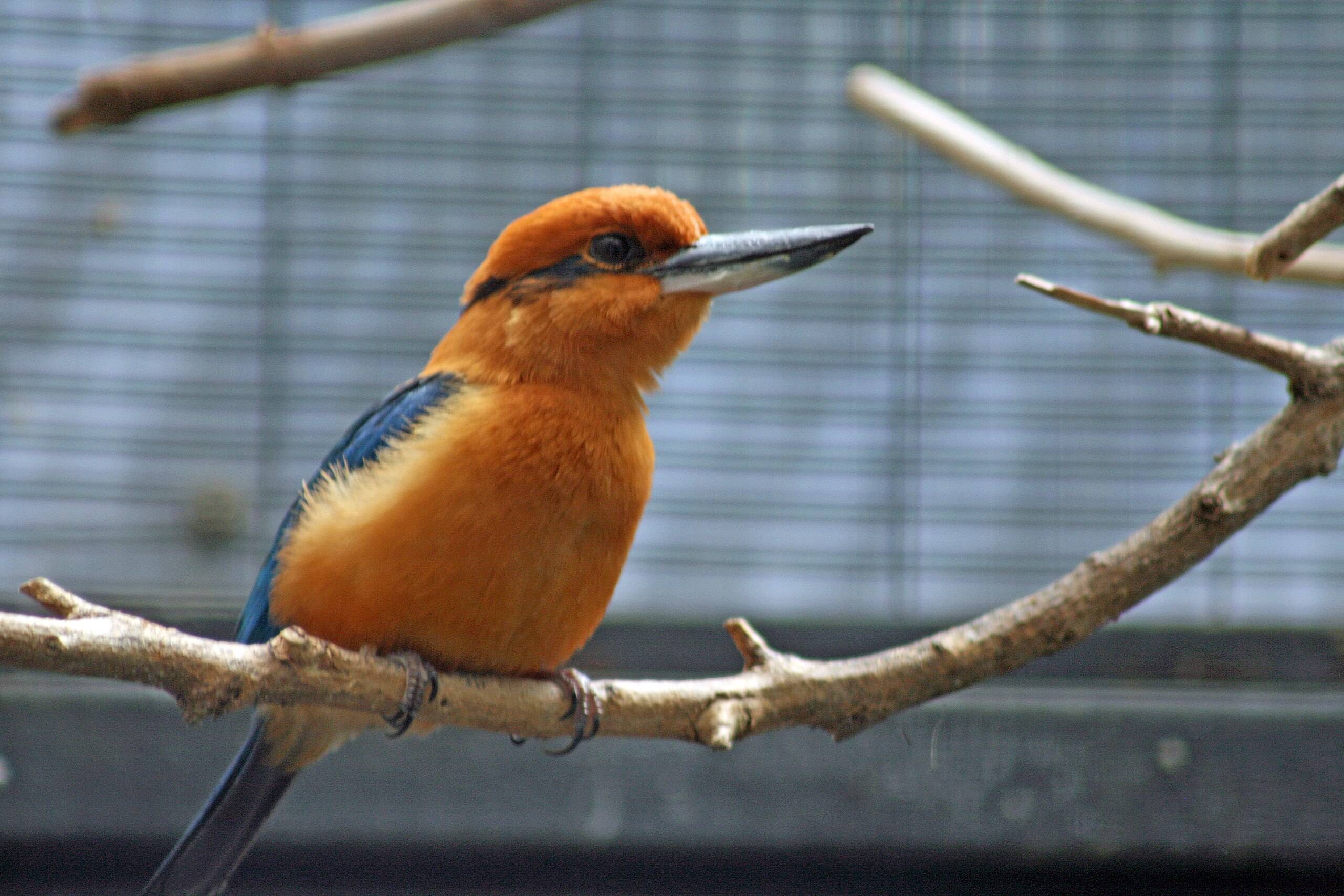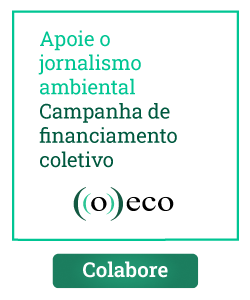In 1972, the last Socorro dove was sighted in the wild. However, this was not the end of the story for this small bird, occurring solely in Socorro Island in Mexico. Roughly 50 years before vanishing from its habitat, 17 of these doves were captured and transported to the United States, thereby establishing a captive population that persists to this day, currently spread across various institutions in North America and Europe. They hover on the brink of extinction, a status internationally recognized as “Extinct in the Wild”. This means that while they can no longer be found in their natural habitat, they haven’t completely disappeared, thanks to human intervention.
A recent survey revealed that 33 animal species and another 39 plant species – maintained in botanical gardens and seed banks – currently find themselves in this situation. These are the most endangered species on the planet. Simultaneously, they represent a singular opportunity for reintroduction and biodiversity recovery.
According to the International Union for Conservation of Nature (IUCN), the organization responsible for the Red List of threatened species worldwide, the “Extinct in the Wild” category encompasses those species known to survive only in cultivation, captivity, or as a population established outside their original range. This is what science terms as ex situ, meaning outside their natural environment and whose continued existence hinges on human care. This mode of conservation can take place in zoos for animals or botanical gardens and seed banks for plants.
“The ‘Extinct in the Wild’ species are the most threatened species. And they are not usually seen by the IUCN because they don’t fit the assessment criteria as they lack wild populations to evaluate. They get stuck between the cracks, they don’t have an owner, they are never in the Action Plans [for Conservation], and are never a priority. But they are still there,” warns Jon Paul Rodríguez, chair of the IUCN’s Species Survival Commission (SSC), in an interview with ((o))eco during the International Congress for Conservation Biology (ICCB).
As the conservation expert points out, despite being formally recognized by the IUCN, the “Extinct in the Wild” category – or simply EW – occupies a neglected space within the Red List. The classification encompasses levels of risk expressed in the categories “Critically Endangered”, “Endangered”, and “Vulnerable”, which include all species deemed to be under threat, with those listed as critical facing the highest risk of extinction. Yet, even though they have already vanished from the wild and now survive solely under human care, species labeled as “Extinct in the Wild” are not considered part of these threatened categories.
“In fact, because the Red List process concerns itself solely with wild populations, the populations of EW species – whether thriving or on the brink – are not subject to assessment,” notes an article published in February of this year in the scientific journal Science.
The research, signed by 15 authors, delves precisely into the plight of plants and animals that survive only in institutions, in ex situ conservation. Through global databases and available literature, the study mapped the populations and destiny of all species considered extinct in the wild and under human care since 1950.
In total, the research identified and gathered the conservation history of 95 species — 52 animals and 43 plants — that were restricted to ex situ care and were deemed Extinct in the Wild at some point since 1950. Of these, 72 — 33 animals and 39 plants — remain in this condition today, according to the survey.

“That’s why we raised a profile of these species, because that’s also a great group of species to do successful recoveries. Because if you are able to reintroduce a species somewhere, it automatically stops being Extinct in the Wild. We have to grab these opportunities where you can really make a difference and communicate that success is possible,” adds Jon Paul, one of the article’s authors. He emphasizes the potential pivotal role of botanical gardens and zoos in such endeavors.
Some species, like the Brazilian Spix’s macaw (Cyanopsitta spixii), native to the semi-arid of Bahia, are still listed as EW globally, despite an initial group of the bird being reintroduced in Bahia in June 2022. The species vanished from the wild in the 2000s and survived thanks to an initial population of 17 individuals, which were maintained and bred in captivity.
On the flip side, 11 species that were only kept in captivity have become extinct during this period. Species like the Saint Helena Olive (Nesiota elliptica), native to the homonymous island in the Atlantic, which saw its last wild specimen die in 1994, with the final tree in ex situ conservation following this destiny in 2003. Or the Pinta Giant Tortoise (Chelonoidis abingdonii), which lived on one of the islands of the Ecuadorian archipelago of Galapagos. The last known individual of this giant turtle passed away in captivity in 2012.
To determine the fate and assess the situation of each of the 95 species, the researchers gathered data on the number of institutions housing the species, factoring in the type of institution for plants (whether they are in botanical gardens or seed banks), the overall size of the ex situ animal population (which is not typically documented for plants), and whether there’s management of the populations or genetic monitoring through a studbook.
The role of the studbook and the “Tinder” of ex situ animals
The studbook is a tool for controlling the genetic diversity of animals under human care. In practice, it’s like a pedigree book that showcases the genealogical tree of every individual. This monitoring ensures that reproduction is systematically planned, forming ideal animal pairs from a genetic standpoint, even bringing together individuals from different institutions when necessary. The individual responsible for this management is termed the “studbook keeper.”
Managing this is vital for the health of captive populations. While the practice is relatively well-established for animals, it’s not so straightforward for plants, starting with the very reproductive logic of plants. Furthermore, there’s still a considerable information gap regarding the origin of populations and a lack of coordination among the institutions maintaining the species, the researchers note.
“We began this survey because we didn’t know anything about the Extinct in the Wild species. This category is treated as an uniform category, but it’s not. When you have a species represented by thousands of individuals, there’s a different level of risk to lose these species compared to one that’s represented by 10 individuals. We have plants that are represented by a single tree. It’s a quite heterogeneous category, and we wanted to look into the details of these species,” shares botanist Thomas Abeli, one of the research authors and a member of an IUCN task force established in 2019 to address EW species.
In total, the species are housed in at least 501 institutions worldwide, with 239 zoos and 262 botanical entities. The majority of animals classified as extinct in the wild are kept in four or fewer zoos. The number for plants is slightly higher, averaging 8 institutions per species. Alarmingly, the study points out that six of these species are confined to just one location.
“Holding species across multiple collections provides a buffer against institutional-level risks such as disease outbreaks, catastrophes, and the financial insecurity and logistical challenges deepened by global crises such as the COVID-19 pandemic,” the researchers highlight. However, over-fragmenting already small populations across multiple institutions can also pose risks.

Throughout their study, the scientists encountered severe challenges for the long-term conservation of these species – even under human care. Only six out of the 30 animal species currently in captivity have populations surpassing 1,500 individuals. Fifteen of them have fewer than 500. The study also raises concerns about the genetic viability of these populations, many of which were established from a limited number of individuals, leading to inbreeding.
In botanical gardens, the majority house just one or a few individuals of each plant species, with scant documentation on their collection origins.
Seed banks present a conservation opportunity for plants. Capable of storing propagules for potentially hundreds of years, thus halting generational passage, these banks can sidestep processes that compromise the genetic viability of ex situ populations over time. Although the technique isn’t suitable for all species, the researchers stress its critical role in ensuring at least 75% of endangered plants are maintained ex situ, in line with the goals of the Global Strategy for Plant Conservation. However, of the species alive exclusively in human institutions evaluated in the study, only 28% are currently logged in seed banks.
The Journey Back to Nature
A casualty of the Atlantic Forest’s destruction, the Alagoas curassow (Pauxi mitu) is a bird that narrowly escaped complete extinction. The species was saved thanks to the efforts of Pedro Nardelli, a businessman from Rio de Janeiro, who rescued several curassows in Alagoas between 1976 and 1978, and initiated their breeding in captivity. The species vanished from the wild in the subsequent decade.
Over 40 years later and after a lengthy ex situ journey, the curassow returned to its true home, the northeastern Atlantic Forest, in 2019, when a few individuals were released into the Private Natural Heritage Reserve (RPPN) Mata do Cedro. The curassow reintroduction project is ongoing, and in February this year it celebrated the first natural reproduction in four decades. Despite this progress, the species is still classified as EW.
The Alagoas curassow is just one example of animals that were extinguished in their habitat but, thanks to ex situ conservation, are given a new chance to thrive in nature. According to the study, out of the 53 animal species that were historically confined to captivity since 1950, 32 have been reintroduced to the wild, making up 60% of the total. Of the 33 species currently still classified as Extinct in the Wild by the IUCN, the percentage is even higher, with 22 already reintroduced.

The Socorro doves (Zenaida graysoni), mentioned earlier in this story, still await their chance to return to their original home on the Mexican island of Socorro. Collected in 1925, these birds have been kept in captivity for about 37 generations. An ongoing reintroduction project is working on restoring the bird’s forest habitat, which was transformed into pastures and degraded soils due to sheep, initially brought over by settlers in the late 19th century. Additionally, a breeding center has been established on the island to house and reproduce the birds for release.
While efforts to reintroduce previously extinct animals have surged in recent decades, plants in the same predicament still suffer from a lack of similar initiatives. Only 11 of the 43 species labeled as Extinct in the Wild, or 26% of them, have been given a new shot in nature between 1950 and 2022. This discrepancy is “perhaps partly attributable to a lower level of attention and available resources accorded to the conservation of plants when compared with that of animals,” note the scientists in a section of the article.
One of the few examples is the jaramago de Alborán (Diplotaxis siettiana). Native to a small habitat on the Spanish island of Alborán in the Mediterranean Sea, it disappeared from the wild in the 1970s. Fortunately, its seeds had been collected in time, and the species was reintroduced starting in 1999. Now reestablished in nature, it is classified as Critically Endangered.
More recently, the Ardennes brome (Bromus bromoideus), a plant native to Belgium, also got a second chance with a commercial boost and a “historical reparation” from the botanical world.

“It’s a spelt that was cultivated until a few decades ago, but it lost ground to wheat and was subsequently left behind. This species, which was endemic to Belgium, went Extinct in the Wild – also due to the use of herbicides. However, they had some seeds at the Botanical Garden of Meise [in Belgium], and they started a partnership with some spelt farmers, because it is getting again more cultivated because of the ‘gluten-free’ demands, because spelt has no gluten. Its cultivation is starting over, and some of these farms are organic, so they don’t use herbicides. Last year, they reintroduced, for the first time, this brome in the fields. It’s an annual plant, so you can evaluate the success of its reintroduction quickly,” shares botanist Thomas Abeli in an interview with ((o))eco.
In total, ten animal species and two plant species once declared extinct in the wild, have regained their wild populations. A prime example is the European bison (Bison bonasus), which disappeared in the wild in 1927 and was reintroduced starting in 1952. Today, the bison has been reclassified as “Near Threatened”, no longer deemed an endangered species.
Another case stems from the rivers of Israel, where a previously extinct fish, Acanthobrama telavivensis, has been “upgraded” to the Vulnerable category on the last evaluation by the Red List. Successfully reintroduced during the winter of 2006-2007, the populations of this small silver fish are recovering at full steam.
In 2020, the IUCN World Conservation Congress drafted a motion to enhance the process and actions of identifying and restoring species declared Extinct in the Wild. The document urges government agencies and NGOs to devise strategies, goals, and action plans to reestablish these species in nature by 2030.
“This should be coupled with the identification of additional currently threatened species whose recovery could be achieved through ex situ care. We urge a forward-looking approach to rescue, revitalize, release, and reinforce populations: rescue suitable species close to extinction into ex situ care, revitalize and strengthen current ex situ populations to ensure continued viability, engage in ambitious and innovative release programs to return species to the wild, and drive recovery of released populations through continued reinforcement and management,” the article’s authors add.
During their research, the scientists also mapped an additional 58 species, consisting of 46 plants and 12 animals, currently categorized as Critically Endangered on the IUCN Red List but indicated as “possibly extinct in the wild” due to a lack of recent species records.
Returning Home?
In a second article – published in the scientific journal Diversity earlier this year – researchers from the IUCN’s Task Force on Species Extinct in the Wild assessed the integrity of the habitats of animals and plants that now exist solely in captivity. This survey represents an initial attempt to understand if these species, some absent from their natural environment for decades, have a place to return to – and what needs to be done to mitigate threats and reintroduce them successfully.
According to the study, about 60% of species categorized as Extinct in the Wild are linked to ecoregions with low habitat integrity. Threats like invasive species, pollution, and climate change affect over half of them and represent some of the challenges that need to be addressed to ensure their return to nature.

Researchers utilized the Global Biodiversity Information Facility (GBIF) database to map the occurrence points of species listed as EW by the Red List and assessed the integrity and trend (degradation, stable, or recovery) of ecoregions between 1993 and 2009. The native distribution of species currently Extinct in the Wild is associated with 106 ecoregions globally.
The analysis revealed that 61% of species listed as EW are completely linked to ecoregions with a low proportion of intact habitat. Furthermore, 46% of them are dependent on ecoregions where a trend of increasing degradation was observed between 1993 and 2009.
On the flip side, 25 species currently confined to ex situ conditions are linked to at least one ecoregion with moderate to high habitat integrity. “This means that for about a third of the current species Extinct in the Wild, there’s a good probability of finding suitable locations for reintroduction,” explains botanist Thomas Abeli, one of the article’s authors.
However, Abeli clarifies that this analysis was conducted on a broad scale, meaning specific habitat nuances need consideration, and more detailed studies are necessary to understand the true feasibility of reintroducing certain species. Additionally, variables related to the ex situ condition, like the number of available individuals and the genetic health of that population, should be taken into account.

Of course, the quantity and quality of habitat are just part of the equation. It’s crucial to also understand other threats – beyond habitat loss – that could jeopardize the species’ successful reestablishment, such as diseases, invasive species, climate change, and pollution.
“These species went extinct for some reason. If it’s because there’s no more suitable habitat, then we can’t do anything. But that’s not true for all species. For some species will probably be difficult to do something, but others are ready to be released [back] in the wild, because we have the numbers[in captivity], the threats are either mitigated or eliminated. Other species require more adjustments in their native range to make reintroduction possible,” the botanist elucidates.
According to him, one of the upcoming steps for the IUCN Task Force on Species Extinct in the Wild is to connect with institutions housing these species to try and bridge existing gaps. “And we are attempting to incorporate information about these ex situ populations into IUCN assessments,” Thomas Abeli adds.
*Story originally published in portuguese in 28th of August, 2023 and translated by Bernardo Araújo
This story was made with the support of the Earth Journalism Network, through the opportunity “Scholarships for Journalists to Cover Biodiversity Conferences”. The grant funded the coverage of the International Congress for Conservation Biology (ICCB) 2023.
Leia também

Brazil’s Atlantic Forest gets a chance at a fresh start through restoration
Over the past five centuries, the Atlantic Forest has been exploited, occupied and gradually exterminated. A biome that once stretched along almost the entire coastline of Brazil has given way to cities where 70% of the country’s population today lives. What remains of the forest is just a fraction of what it used to be. →

A Shrinking Home: a monkey cornered by deforestation
Researchers race against the destruction of the Amazon to ensure the survival of the Mato Grosso titi monkey, one of the world's most endangered primates →

How Brazil is working to save the rare lion tamarins of the Atlantic Forest
Golden lion tamarin conservation efforts have been successful, growing the population from a one-time low of 200 animals to more than 2,000 today. →








